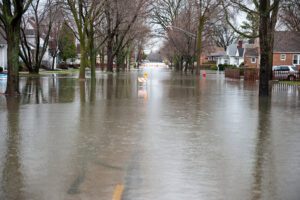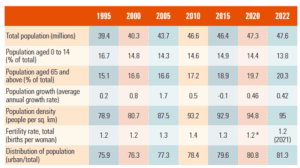Damage Caused Not by Superstorm Sandy, But by Faulty Workmanship, Not Covered
The federal district court adopted the Report and Recommendations (R&R) of the magistrate judge, finding there was no coverage for faulty workmanship in replacing a roof for an apartment complex. Burlington Ins. Co. v. PCGNY Corp., 2024 U.S. Dist. LEXIS 167814 (S.D. N. Y. Sept. 16, 2024).
Skyline Restoration was hired by the apartment complex to replace the apartments' roofs. Skyline subcontracted with PCGNY Corporation. The roofs were later damaged during Superstorm Sandy. Defendant Affiliated FM Insurance Company ("Affilliated"), a subrogee of the owner of the apartment complex, sued Skyline for defective, faulty and unworkmanlike removal and replacement of the roofs. Skyline filed a Third-Party Complaint against PCGNY.
Plaintiff Burlington Insurance Company filed this coverage action against Skyline, Affiliated, PCGNY and others seeking a declaration that it had no duty to defend and/or indemnify PCGNY and/or Skyline, and that it was permitted to withdraw from the defense of PCGNY. Burlington filed a motion for summary judgment. The motion was referred to the magistrate judge who recommended that Burlington be granted a declaration that it had no duty to defend or indemnify PCGNY or Skyline and that it be allowed to withdraw from the defense of PCGNY in the underlying case.
The district court adopted the R&R. The magistrate judge correctly concluded that under New York law, damage to an insured's own work or product did not constitute property damage caused by an occurrence. Further, the R&R correctly found that even CGL policies containing a Your Work exclusion for damage caused by a subcontractor did not cover as occurrences defective workmanship claims unless the defective workmanship caused damage to property that was outside of the scope of the insured's construction project. Because the claims in the Underlying Action were not for damages to property that was outside of the scope of the insured's construction project, the magistrate judge correctly applied New York law to determine that the Your Work exclusion did not affect the conclusion that the damages in the Underlying Action were not the result of an occurrence.
The court also rejected arguments by Skyline and PCGNY that the R&R ignored the overwhelming evidence from the Underlying Action proving the alleged property damage was caused by Superstorm Sandy and not faulty workmanship. This was a question of causation not before the court. Instead, the issue was whether the Underlying Complaint alleged an "occurrence" that triggered coverage in the Underlying Action. The Underlying Complaint did not allege that the damage to the roof was caused by Superstorm Sandy. If the Underlying Complaint had done so, the plaintiff in that case would have no claim against Skyline and PCGNY. Because the Underlying Complaint failed to allege an "occurrence" as defined in the policies, the measure of Superstorm Sandy's impact on the roofs was irrelevant,





